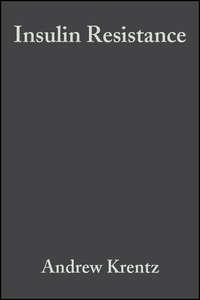Insulin Resistance

Сборник 43516200
Жанр:медицина
Язык книги:Английский
Тип:PDF книга
Издательство:John Wiley & Sons Limited
Дата публикации:08.12.2022
Просмотры:38
Отзывы:Пока нет Добавить отзыв
О книге: Insulin resistance, defined as a reduced biological action of insulin, has emerged as a major factor in the development and progression of a number of common non-communicable diseases in man. The role of insulin resistance in the aetiology of type 2 diabetes is particularly well-established. However, insulin resistance has also come to be regarded as a key component of a broader syndrome of common metabolic defects that conspire to increase the risk of atherosclerotic coronary heart disease. The ramifications of insulin resistance now embrace many different medical specialties. The objective of this book is to summarize the current state of knowledge about insulin resistance. Section 1 (Pathophysiology of Insulin Resistance) considers the development of current concepts of insulin resistance. This is followed by a critical review of techniques for the assessment of insulin action in humans. The section concludes with an outline of current hypotheses concerning the molecular defects responsible for insulin resistance. Section 2 (Insulin Resistance in Clinical Medicine) broadens the discussion to include physiological and pathological conditions with which insulin resistance is associated; the effects of drug treatment on insulin sensitivity are also considered. Section 3 (Management of Insulin Resistance and Associated Conditions) focuses on the avoidance and treatment of insulin resistance in its clinical manifestations. A discussion of the potential benefits of non-pharmacological measures prefaces a review of the range of drugs used in the treatment of type 2 diabetes and related disorders. References are confined to key articles at the end of each section. Improved nutrition allied to increased levels of physical exercise are of crucial importance in the battle to stem the increasing incidence and prevalence of insulin resistance; however, translation of such advice into action has proved difficult in practice. Thus, other approaches have been explored. Recent years have witnessed considerable progress in the pharmacological management of insulin resistance. In particular, the thiazolidinediones (and other insulin-sensitizing drugs) appear to provide a more specific assault on insulin-resistance. Clinical experience with these agents remains relatively limited and serious hepatotoxicity has clouded the first agent in this class – troglitazone. With its introduction into the USA in 1995 and driven by the publication of the United Kingdom Prospective Diabetes Study, metformin has enjoyed a renaissance. This well-established agent is finding application for new clinical indications. In parallel, the development of anti-obesity drugs continues apace. The molecular and genetic mechanisms underlying some forms of insulin resistance are being revealed. Original intellectual concepts such as the fetal origins hypothesis are challenging traditional views about the aetiology of insulin resistance and its clinical sequelae. These exciting scientific adva